The Magnificent Seven Elephants
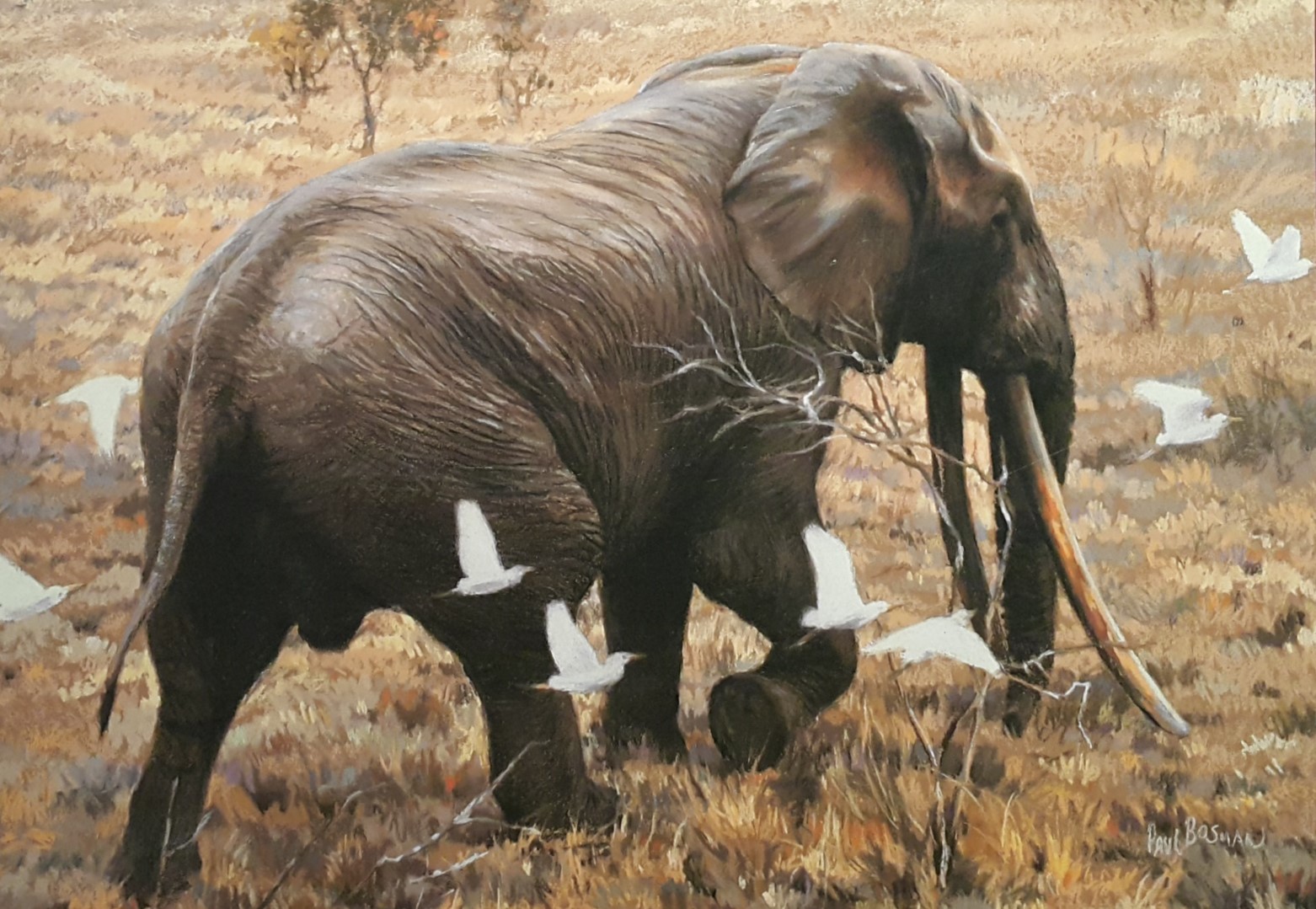 All the elephant paintings on this page are from the book, The Magnificent Seven and the other great tuskers of the Kruger National Park, by Paul Bosman, and Anthony Hall-Martin
All the elephant paintings on this page are from the book, The Magnificent Seven and the other great tuskers of the Kruger National Park, by Paul Bosman, and Anthony Hall-MartinThe Magnificent Seven elephants were seven impressive bull elephants, all with tusks weighing more than 50 kg each, that could be found in Kruger National Park.
The Chief Warden at the time, Dr U de V Pienaar, decided to publicise these elephants as a successful example of Kruger's conservation work. He named those bulls that had not already been identified and also coined the collective name, the Magnificent Seven, based on the 1960 Hollywood film.
The promotion was launched in 1980 with specially commissioned paintings by celebrated wildlife artist Paul Bosman and illustrated articles written by the park's Senior Research Officer, Dr Anthony Hall-Martin.
The public reaction was staggering and, when each of these great elephants died, it was decided to retrieve their tusks and skulls in order to display them.
Their legend lives on in two ways:
1. the Elephant Hall Museum at Letaba Rest Camp now holds the tusks of Dzombo, Kambaku, Mafunyane, Ndlulamithi, Shawu and Shingwedzi.
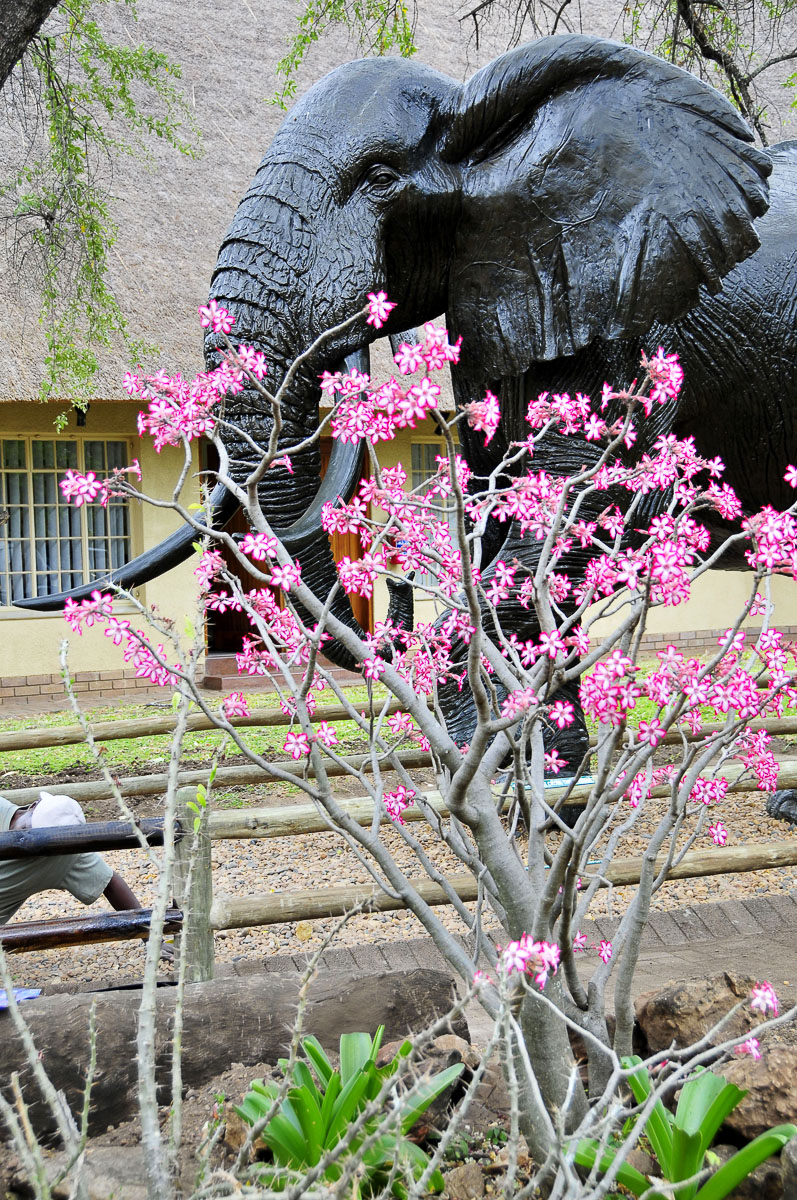
2. Paul Bosman has painted the Magnificent Seven and you can purchase a series of prints reproduced from the original paintings.
Here are images of the seven beautiful paintings as well as photographs of the tusks...
Dzombo (c.1935–1983)
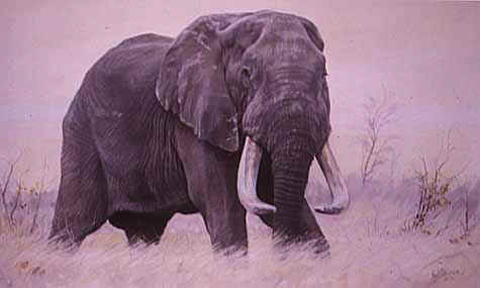
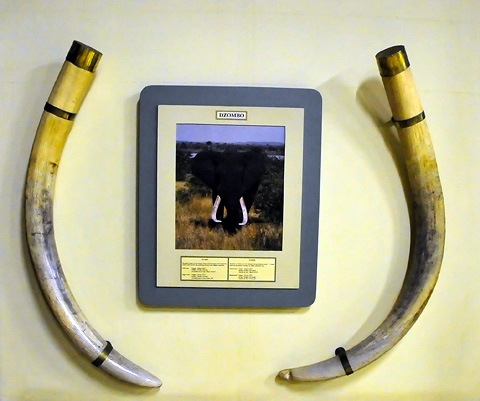
Dzombo was the only one of the “Magnificent Seven” to be killed by poachers and it was only by a stroke of luck that Dzombo’s two tusks were not taken. He died in a hail of bullets from an AK 47 fired by a poacher from Mozambique in October 1985.
The poachers were in the act of chopping out the tusks when they were disturbed by the approach of Ranger Ampie Espag and fled leaving their trophies behind. Dzombo met an untimely death at the age of 50 years.
João (date unknown)
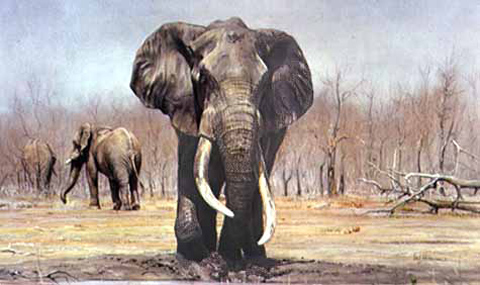
In 1984, at an approximate age of 45 years, João broke both his tusks close to the lip line, presumably in a fight with another bull.
Unfortunately the pieces were never found and as a result João is the only member of the Magnificent Seven who is not represented in the Letaba Elephant Hall.
Kambaku (c.1930-1985)
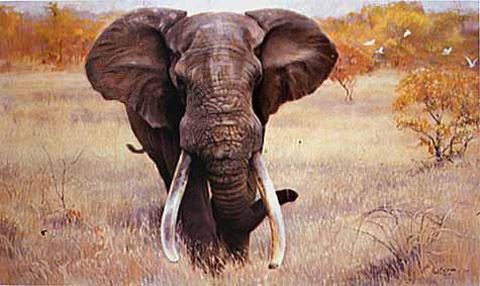
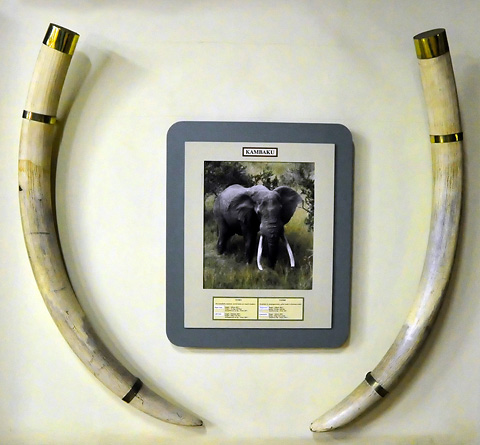
Kambaku was commonly seen by the rangers of the Kingfisherspruit area and was photographed by many visitors to the Kruger National Park. Uniquely unlike several of the other Magnificent Seven bulls, Kambaku was always seen alone.
He was more than 55-years-old when he was shot in late 1985 by Regional Ranger Lynn van Rooyen from the Lower Sabie Ranger Section. The bull was in obvious pain from a bullet wound suffered during a foray across the Crocodile River into a neighboring sugar cane fields.
The bullet penetrated his left shoulder, leaving a large wound which eventually became septic. When he could not longer walk and it was clear that death was imminent, he was mercifully shot.
Our favourite lodge is named after him - Kambaku River Lodge, which is situated on the banks of the Crocodile river.
Mafunyane (Carcass discovered 16th November 1983)
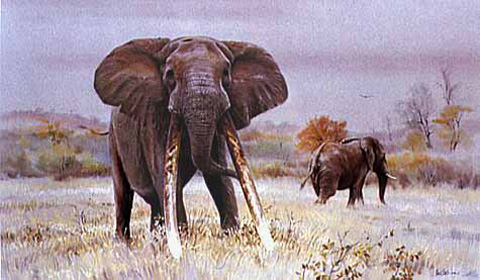
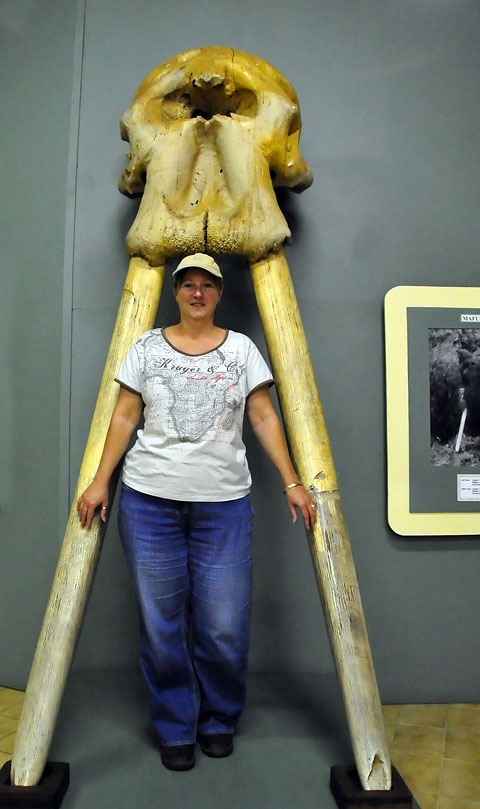
Mafunyane was the most famous of the “Magnificent Seven” although he was only seen in the wild by a handful of people, and was rarely seen by visitors as he kept well away from roads. This could be attributed to his shyness or to the fact that he chosen roaming area was very remote.
Mafunyane despite having impressive tusks, was not a large bull and was only 327cm at the shoulder, when compared with the average 340cm shoulder height of the other members of the Magnificent Seven.
Mafunyane’s remains were found on 16 November 1983 near Tari River, Northwest of Shingwedzi. He had been dead for approximately 3-4weeks and appeared to have died of natural causes. He was about 57 years old when he died.
|
Should you wish to get the Kruger eBook, click on the above book cover, then click 'Add to Cart' where you'll see a button called 'Add Promo Code'. Click on it then add the word K2K and the 33% discount will be automatically applied. This code is valid until the end of the month, so don't delay! |
"This is an indispensable guide to getting the best out of Kruger, camera in hand or not!” - Caroline Webb, Associate Editor, Getaway Magazine, South Africa  |
Ndlulamithi (c.1927–1985)
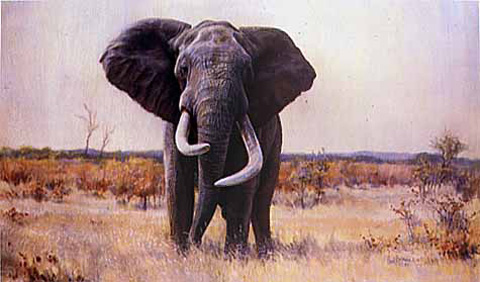

Ndulamithi was first identified in 1980 along the Nkokodzi River in northern Kruger National Park. He was an aggressive yet secretive elephant, and was seldom seen. This bull received some fame for charging Dr Anthony Hall-Martin and his assistant while they were trying to photograph him on foot, his intentions unmistakable.
He died of natural causes in 1985 in the Shangoni area at an estimated 58 years of age. Paul Zway section ranger of Shangoni at the time found his remains not far from the Nkokodzi Spruit.
Shawu (October 1982)
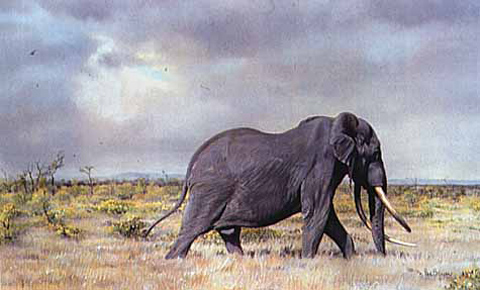
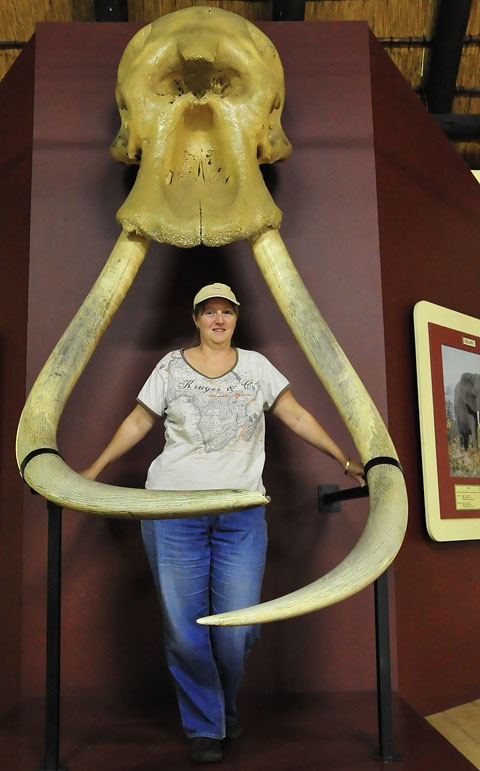
Shawu was a fairly approachable elephant and showed no particular fear or distrust of vehicles. He was a large bull having a shoulder height of 340cm. Due to the pincer formed by his large tusks he was sometimes referred to in Afrikaans as “Groot Haaktand”.
In 1981 it was decided to fit Shawu with a collar as poaching was a constant threat from Mozambique, this was done successfully and he was monitored on a regular basis.
Shawu died of old age in the Kostini area east of Shingwedzi, near the northern watershed of the Shawu Valley (Vlei) in October 1982. He had been ill for some time and his condition and movements were monitored daily towards the end of his life by means of a radio transmitter which had been fitted in a collar around his neck. He was close to 60 years old when he died.
Shingwedzi (c.1934-1981)
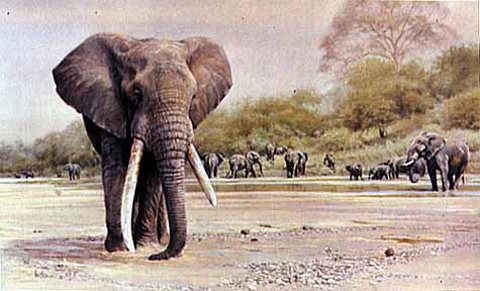
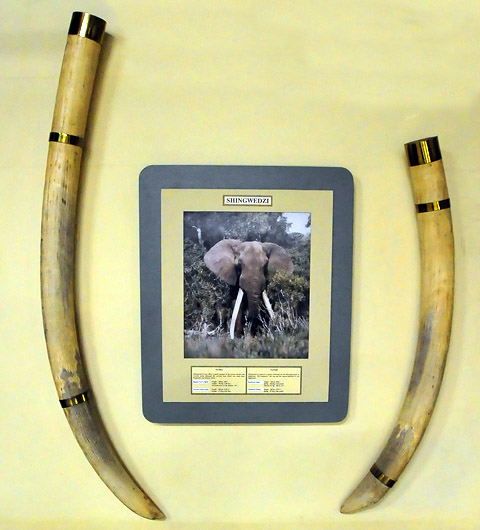
Shingwedzi was found dead under a Sycamore Fig and short distance from Shingwedzi camp in January 1981, and as far as can be determine he died of natural causes.
The age of an Elephant can be fairly accurately determined from the state of wear of the teeth. In the case of Shingwedzi the last molar (molar 6) was well worn down, giving him an estimated age of 65 (56) years.
This book, which is now a collector's item, provides a lot more information on these seven elephants...
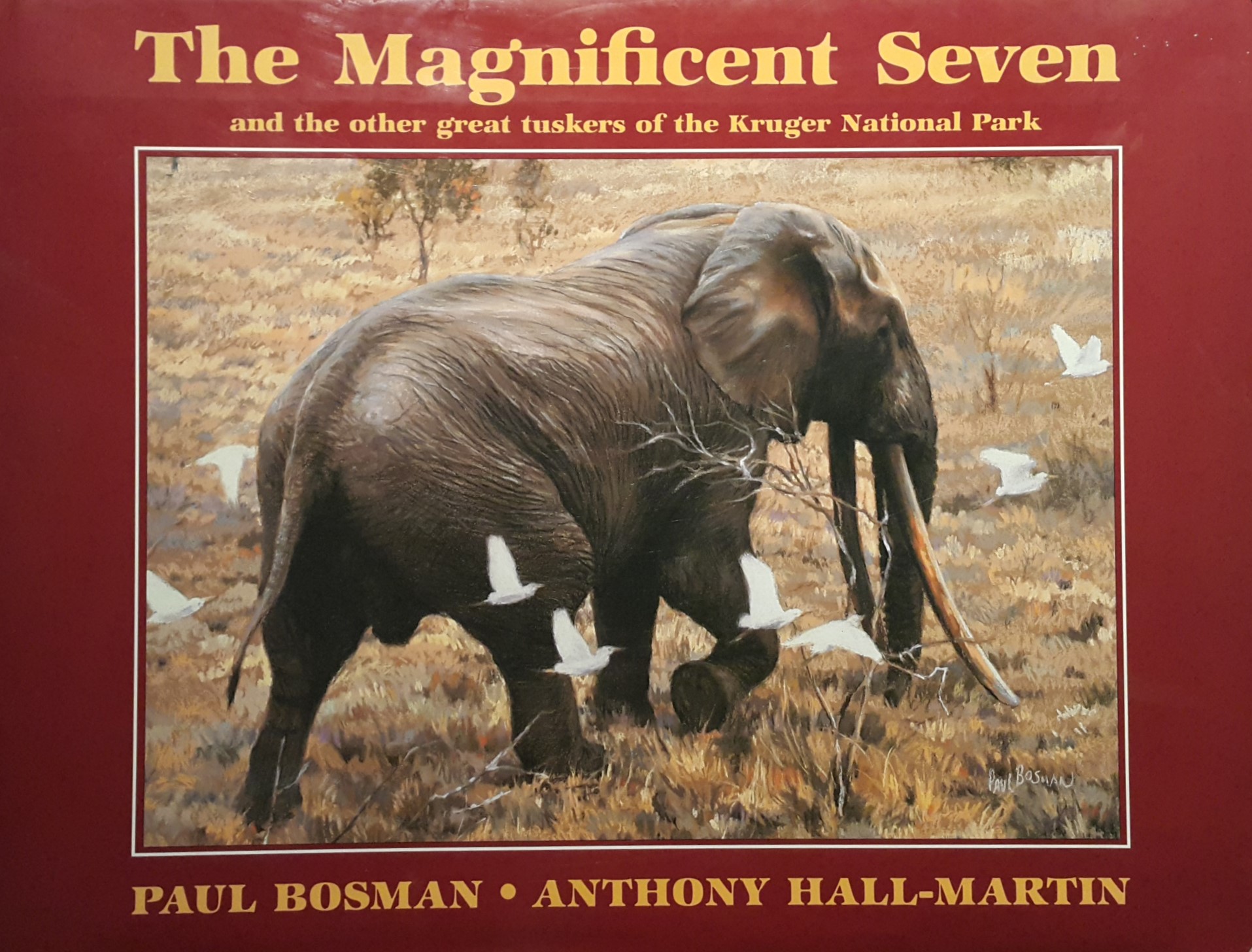
The Magnificent Seven elephants have been replaced by a new generation of big tuskers, the largest of which was called Duke, named after the waterhole near Crocodile Bridge Camp.
Duke died in October 2011 but do keep a lookout for the other 'Emerging Tuskers' that will replace these famous old bull elephants.
Daryl Balfour is one of the world's top wildlife photographers and you can read about his close-call with Tshokwane, one of the then emerging tuskers, in our interview with Daryl.
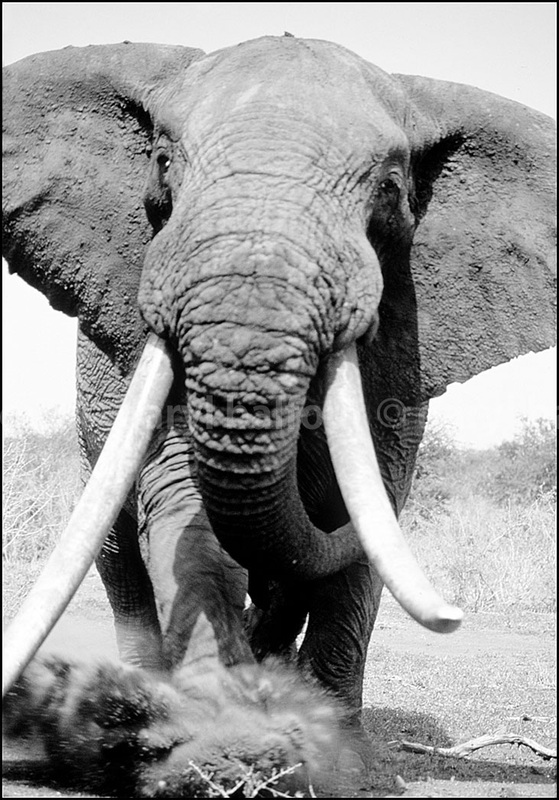
Return from Magnificent Seven Elephants to Big-five page
To make a safari rental booking in South Africa, Botswana or Namibia click here
"It's 764 pages of the most amazing information. It consists of, well, everything really. Photography info...area info...hidden roads..special places....what they have seen almost road by road. Where to stay just outside the Park...camp information. It takes quite a lot to impress me but I really feel that this book, which was 7 years in the making, is exceptional." - Janey Coetzee, South Africa
"Your time and money are valuable and the information in this Etosha eBook will help you save both."
-Don Stilton, Florida, USA
"As a photographer and someone who has visited and taken photographs in the Pilanesberg National Park, I can safely say that with the knowledge gained from this eBook, your experiences and photographs will be much more memorable."
-Alastair Stewart, BC, Canada
"This eBook will be extremely useful for a wide spectrum of photography enthusiasts, from beginners to even professional photographers."
- Tobie Oosthuizen, Pretoria, South Africa
Photo Safaris on a Private Vehicle - just You, the guide & the animals!













New! Comments
Have your say about what you just read! Please leave us a comment in the box below.